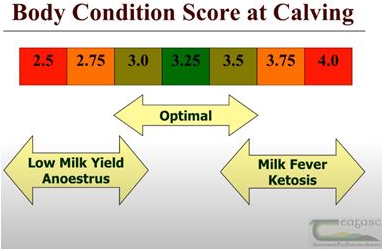The body condition score (BCS) of cows should be one of the main factors that determines when a cow is dried off.
The drying off of cows has commenced on farms, as the 2021 season winds down, with both farmers and animals finally taking a rest ahead of next year.
Cows in too low of a BCS at calving can lead to health issues and/or lower milk yields. Similarly, cows in too high of BCS can also develop issues, i.e. milk fever or ketosis.
Having cows in the correct condition score will reduce the number of cows that require treatment and need assistance calving.

BCS
Cows in a low BCS in late lactation should be offered a longer dry period than the standard of 60 days.
Many farmers offer cows extra meal in the hope of improving condition, but the only true way to improve a cow’s condition is by reducing the energy demand.
In other words, reduce the demand placed on the cow from milk production.
Continuing to milk low BCS or thin cows into December will only lead to the development of issues, i.e. increased risk of calving difficultly.
Dry period
While looking after thin cows is important, ensuring cows do not become over-conditioned is also important.
Later calving cows that are dried off in December often become over conditioned – at times it can be hard to spot these cows before it is too late.
Every herd will have a number of late-March or April-calving cows, these cows were most likely dried off in mid-December.
These cows could have a dry period longer than three months, which means they can easily become over conditioned.
These cows need to monitored closely to ensure that the extra condition they put on is not excessive, which could lead to a number of down cows late in the calving season.
